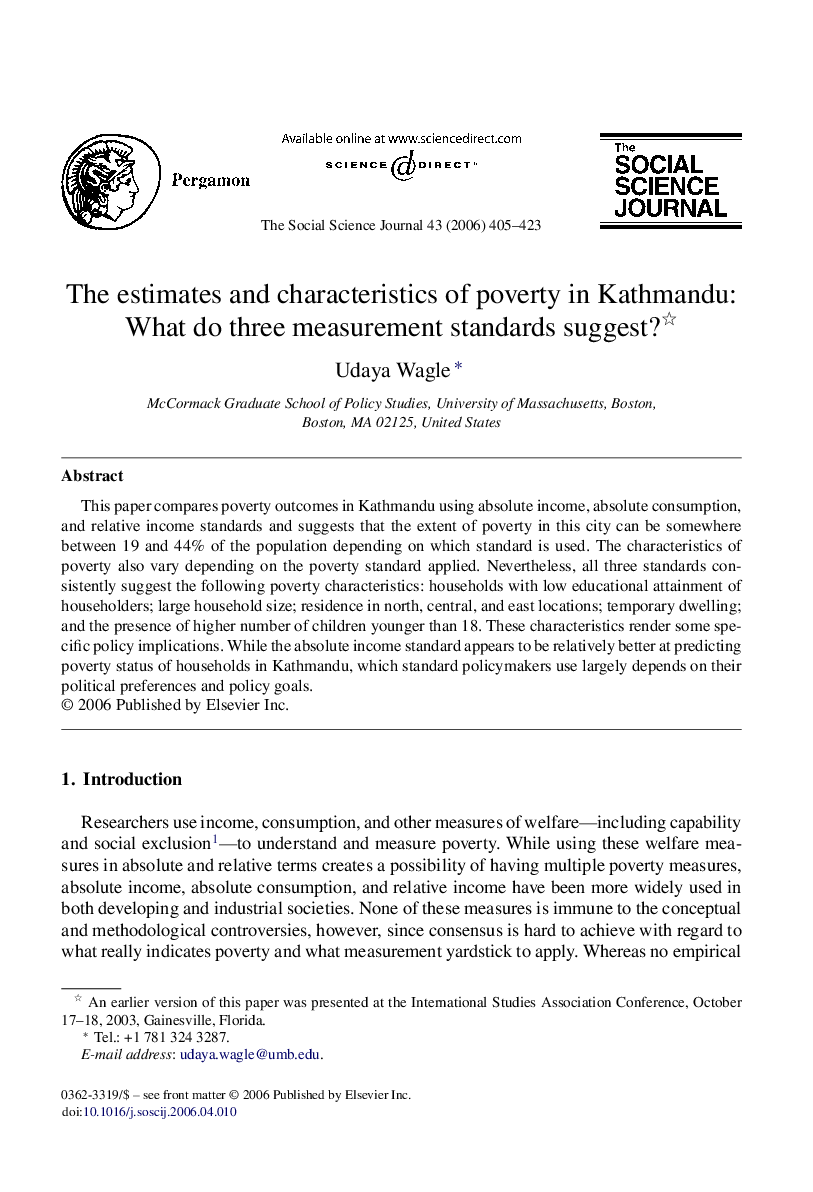| Article ID | Journal | Published Year | Pages | File Type |
|---|---|---|---|---|
| 140724 | The Social Science Journal | 2006 | 19 Pages |
This paper compares poverty outcomes in Kathmandu using absolute income, absolute consumption, and relative income standards and suggests that the extent of poverty in this city can be somewhere between 19 and 44% of the population depending on which standard is used. The characteristics of poverty also vary depending on the poverty standard applied. Nevertheless, all three standards consistently suggest the following poverty characteristics: households with low educational attainment of householders; large household size; residence in north, central, and east locations; temporary dwelling; and the presence of higher number of children younger than 18. These characteristics render some specific policy implications. While the absolute income standard appears to be relatively better at predicting poverty status of households in Kathmandu, which standard policymakers use largely depends on their political preferences and policy goals.
